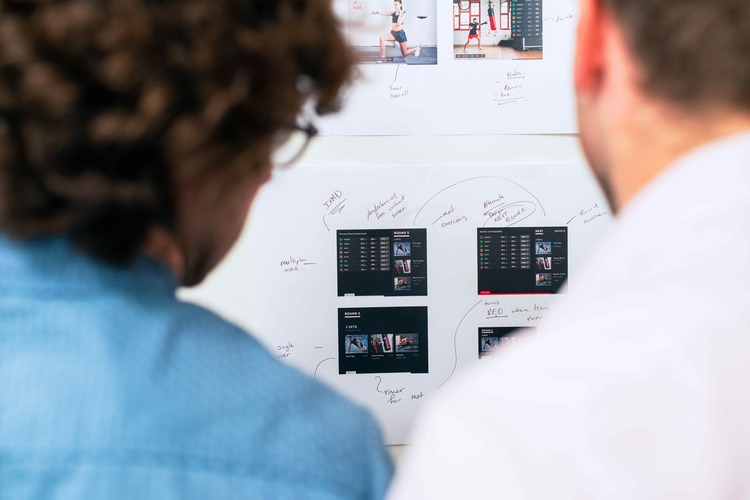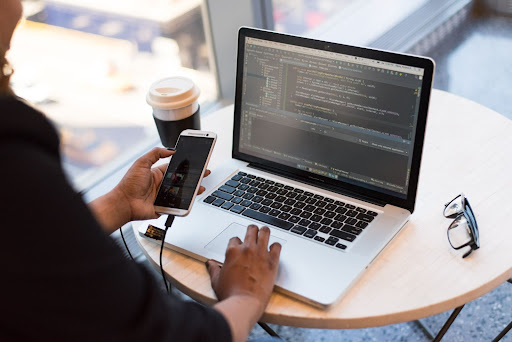
The Mobile App Development Process
The Complete Mobile App Development Lifecycle: From Ideation to Launch
Building a mobile app that meets business goals and provides a great user experience requires a strategic approach at every stage of development. Here’s a detailed breakdown of the mobile app development lifecycle to ensure your app’s success:
1. Ideation
Every great app begins with an idea. During the ideation phase:
- Creative brainstorming sessions are conducted to generate app ideas aligned with business goals.
- These ideas focus on how the app can address specific customer needs or industry challenges.
- Feasibility studies are carried out to identify potential roadblocks and solutions.
This step sets the foundation for the entire development process.
2. Market Research
Understanding your audience is crucial for designing a successful app. This phase involves:
- Analyzing the target audience and their preferences, behavior, and pain points.
- Researching competitors to identify gaps and opportunities.
- Defining the app’s unique selling points (USPs) to differentiate it in the market.
Comprehensive market research ensures your app meets user demands and stands out.
3. Discussion
Collaboration across teams helps refine the app concept and development strategy:
- Teams from management, marketing, legal, sales, and other departments provide valuable input.
- Goals, compliance requirements, and promotional strategies are discussed and aligned.
Cross-functional discussions ensure the app aligns with broader business objectives.
4. Establishing Mobile App Goals
Clear goals help define the app’s purpose and functionality. This includes:
- Determining how the app will solve customer problems.
- Identifying key features and core functionalities that will attract and retain users.
- Understanding the app’s primary appeal, whether it’s efficiency, entertainment, or engagement.
Setting measurable goals keeps the project focused and efficient.
5. Design and Storyboard
Designing the app’s structure and user flow is a critical step.
- Wireframing: Creating visual blueprints of the app’s layout and navigation.
- Storyboarding: Mapping out the user journey and app interactions.
- Visual and functional elements are planned during this stage to ensure a seamless user experience.
6. Defining the Backend of the App
The backend is the backbone of any mobile app. During this phase:
- APIs, servers, and databases are defined and structured.
- Data integration processes are developed to ensure smooth communication between the app and the backend.
- The right platform or cloud services are selected for scalability and reliability.
A robust backend ensures that the app performs efficiently, even under heavy usage.
7. Wireframe Prototype Testing
The wireframe is tested using prototyping tools to refine its functionality and ease of use:
- Testing identifies potential flaws in navigation and design.
- Feedback is used to improve the user flow and functionality.
This phase is essential to ensure the app’s usability before coding begins.
8. Actual App Development
The coding phase begins, where the app is built using an appropriate development platform.
- Frontend and backend development teams work together to create a fully functional app.
- Agile methodologies are often used to ensure continuous feedback and iterations.
This step turns ideas and designs into reality.
9. App Prototype Testing
Once the app is developed, it undergoes rigorous testing:
- Functional, usability, and performance testing are conducted to identify bugs or flaws.
- User feedback is collected to make improvements.
Thorough testing ensures a high-quality app ready for launch.
10. Launch Preparation
Before the official release, marketing and promotional efforts build awareness and anticipation:
- SEO landing pages, blogs, and social media campaigns are used to attract potential users.
- Teasers and beta versions may be released to gather early feedback.
A strong pre-launch strategy helps the app gain traction immediately after release.
11. Official Release
The app is officially launched and made available to the target audience.
- Download statistics, ratings, and reviews are monitored to measure initial success.
- Post-launch updates are planned based on user feedback to keep the app relevant and engaging.
Why Choose Digital Fractal for Your Mobile App Development?
At Digital Fractal, we specialize in guiding businesses through every stage of app development. From ideation to the official launch, our team ensures your app is tailored to your business needs and delivers exceptional user experiences.
Let us help you create an app that stands out in today’s competitive market. Visit www.digitalfractal.com to get started today!

